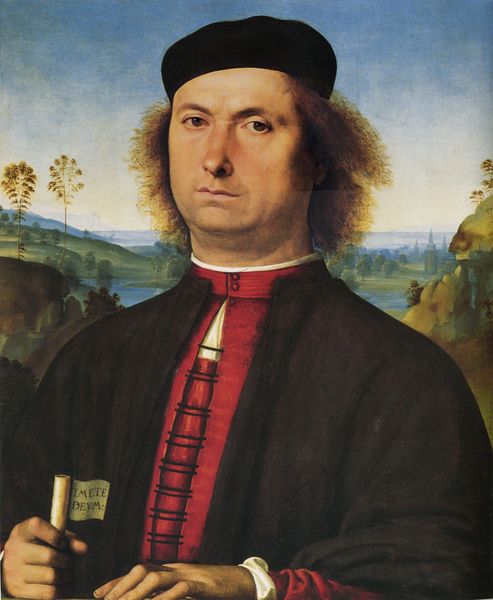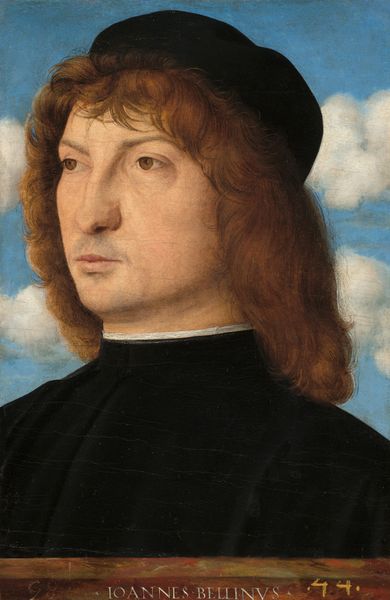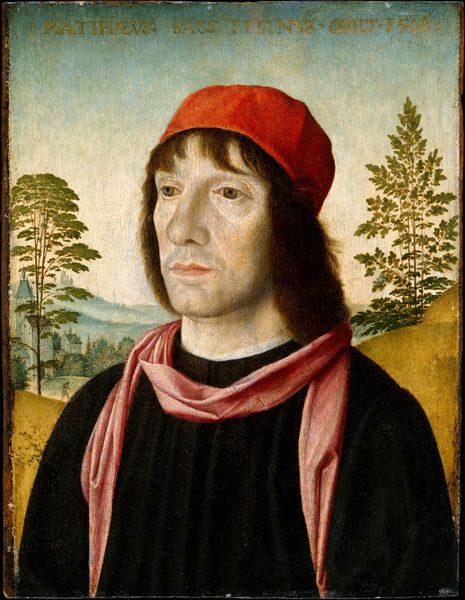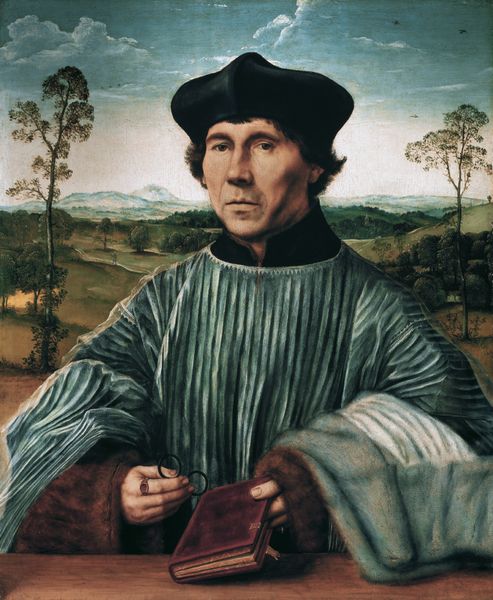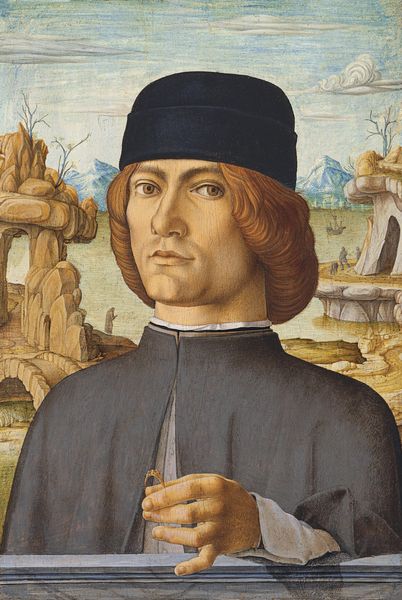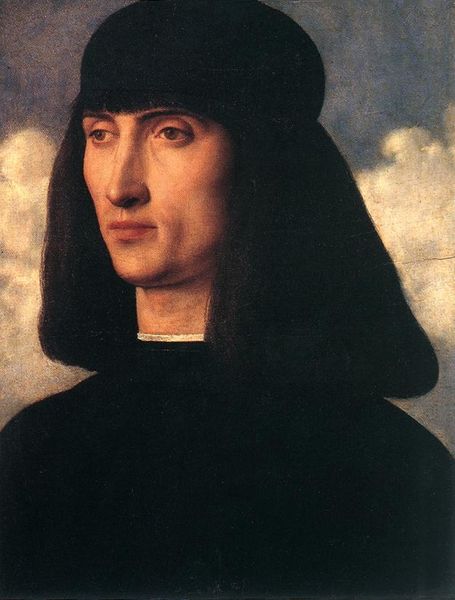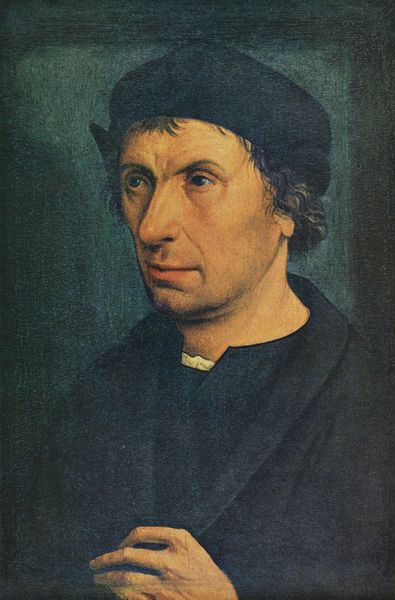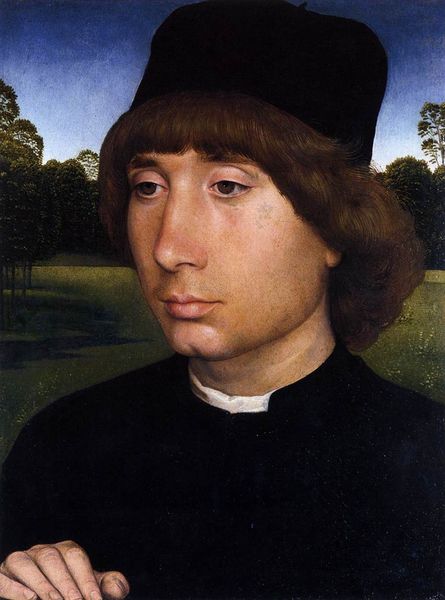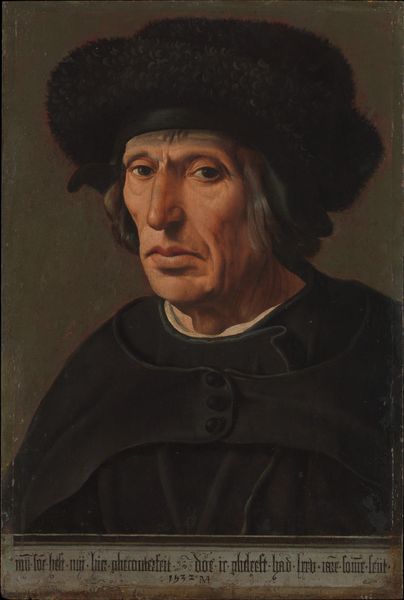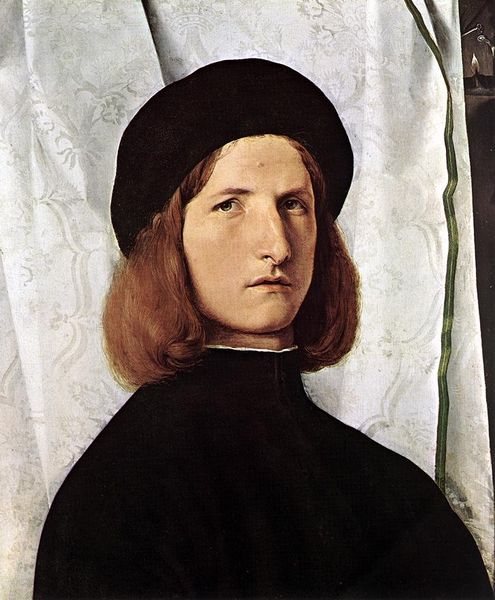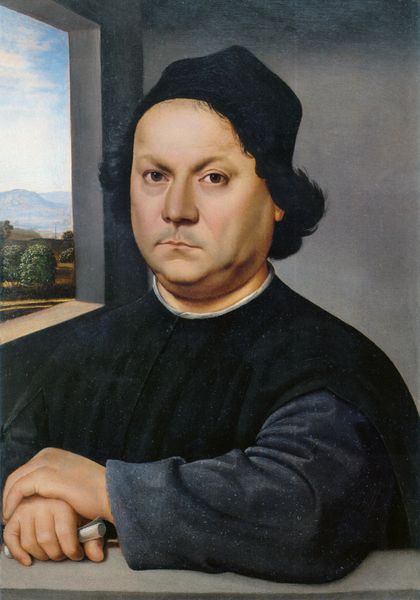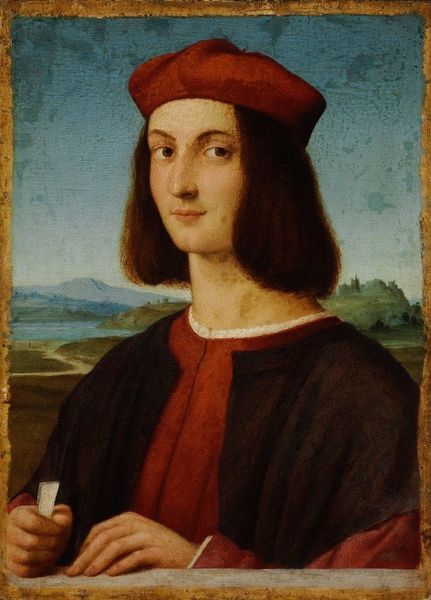
painting, oil-paint
#
portrait
#
painting
#
oil-paint
#
landscape
#
figuration
#
11_renaissance
#
italian-renaissance
Dimensions: 30.5 x 44 cm
Copyright: Public domain
Curator: Standing before us, we have Pietro Perugino’s "Portrait of Lorenzo di Credi," an oil painting dating back to 1488, housed right here at the National Gallery of Art. Editor: He looks rather contemplative, doesn’t he? Almost melancholic. And that muted palette, contrasting with the detailed landscape... it's a rather striking composition. Curator: Absolutely. What's interesting here is how Perugino, while creating a portrait of Credi, who himself was an artist, participates in this whole culture of artistic representation, showing a fellow painter. There's this implied commentary on the artist as an intellectual and someone worthy of memorialization. Editor: Indeed, his face, so smooth, almost mask-like. Then you notice his garments. The black contrasts so sharply against the idyllic backdrop of rolling hills. Does this say something about Credi’s role within Florentine society at the time, the starkness almost creating a contrast to his wealth or status? Curator: Perhaps, but black attire also served a symbolic function in Renaissance portraiture. While it became a marker of wealth, solid color created an image of simplicity, virtue, seriousness, that were especially in favor at that moment. It's also important to recognize that, although a contemporary, Credi was a friend of Perugino. This familiarity between sitter and painter allowed the painter the opportunity to emphasize character over social status. Editor: That adds another layer, the human element. Seeing how this friendship transcends the societal conventions, emphasizing the intellectual exchange of their time, this pursuit of Renaissance ideals, now frozen in oil paint. Curator: And to think, all of this displayed for a viewing public who may or may not recognize the historical currents beneath a seemingly simple portrait. That’s why museums have a responsibility to make such layers accessible to people. Editor: Right, bringing symbols to the forefront, recognizing how that artist translated that memory into our present. Makes you consider what future generations might decipher from the symbols of our era.
Comments
No comments
Be the first to comment and join the conversation on the ultimate creative platform.
